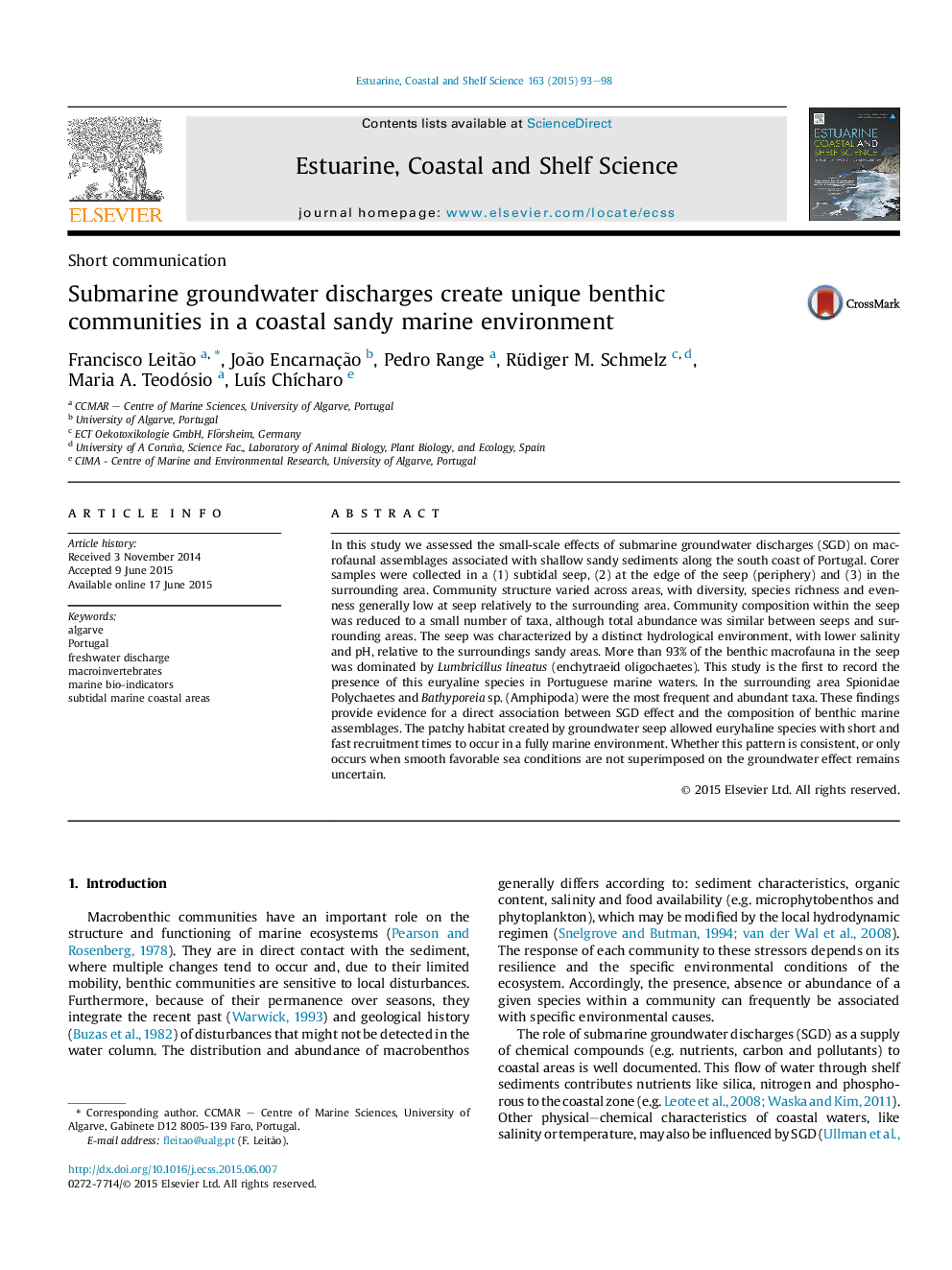| Article ID | Journal | Published Year | Pages | File Type |
|---|---|---|---|---|
| 4539411 | Estuarine, Coastal and Shelf Science | 2015 | 6 Pages |
In this study we assessed the small-scale effects of submarine groundwater discharges (SGD) on macrofaunal assemblages associated with shallow sandy sediments along the south coast of Portugal. Corer samples were collected in a (1) subtidal seep, (2) at the edge of the seep (periphery) and (3) in the surrounding area. Community structure varied across areas, with diversity, species richness and evenness generally low at seep relatively to the surrounding area. Community composition within the seep was reduced to a small number of taxa, although total abundance was similar between seeps and surrounding areas. The seep was characterized by a distinct hydrological environment, with lower salinity and pH, relative to the surroundings sandy areas. More than 93% of the benthic macrofauna in the seep was dominated by Lumbricillus lineatus (enchytraeid oligochaetes). This study is the first to record the presence of this euryaline species in Portuguese marine waters. In the surrounding area Spionidae Polychaetes and Bathyporeia sp. (Amphipoda) were the most frequent and abundant taxa. These findings provide evidence for a direct association between SGD effect and the composition of benthic marine assemblages. The patchy habitat created by groundwater seep allowed euryhaline species with short and fast recruitment times to occur in a fully marine environment. Whether this pattern is consistent, or only occurs when smooth favorable sea conditions are not superimposed on the groundwater effect remains uncertain.
